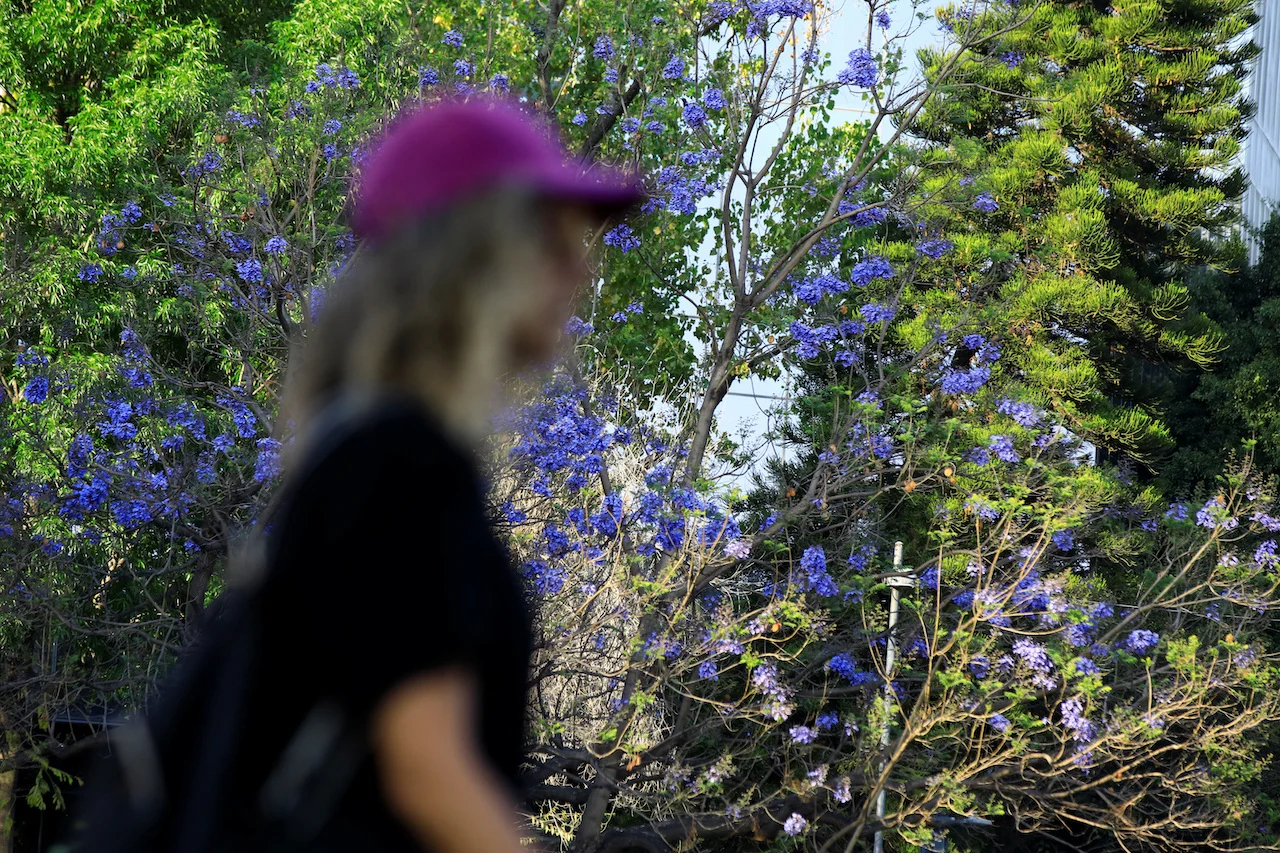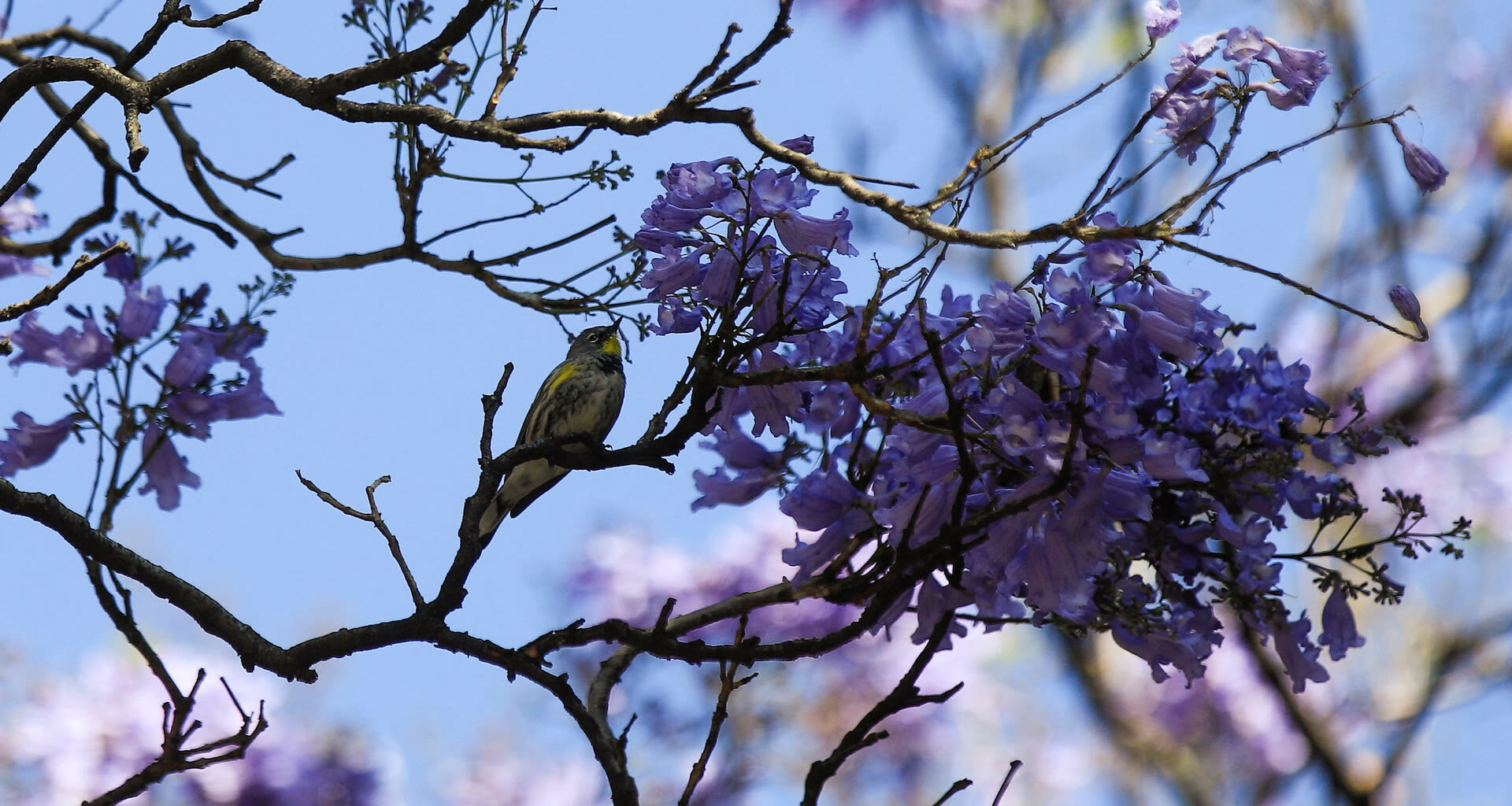“They are starting to flower in January, February, which is winter, when it is not yet their time,” said the biologist of 48 years.
Gonzalez explained that in order to draw a correlation between climate change and the early flowering of jacarandas his team needs a representative sample and compare blooms year to year. To do this, he has started to lead a group of young people who are collecting data throughout the city and using satellite imagery.
He noted rising temperatures caused winter in the Mexican capital to end early this year, in mid-January, instead of late March when it is supposed to end.
Adaptation
Enthralled by the Japanese cherry trees that cover Washington, D.C. in pink and white every spring, Mexican President Pascual Ortiz (1930-1932) set out to replicate the same landscape in his nation’s capital.

A woman passes by a jacaranda tree at Plaza Cibeles in Mexico City, Mexico. February 22, 2024. REUTERS/Raquel Cunha
But Tatsugoro Matsumoto, a Japanese landscape architect who settled in Mexico in the late 19th century, told him they would not survive the city’s temperate climate for long, so he advocated for jacarandas, a tropical tree he had learnt about during a brief stay in Peru.
